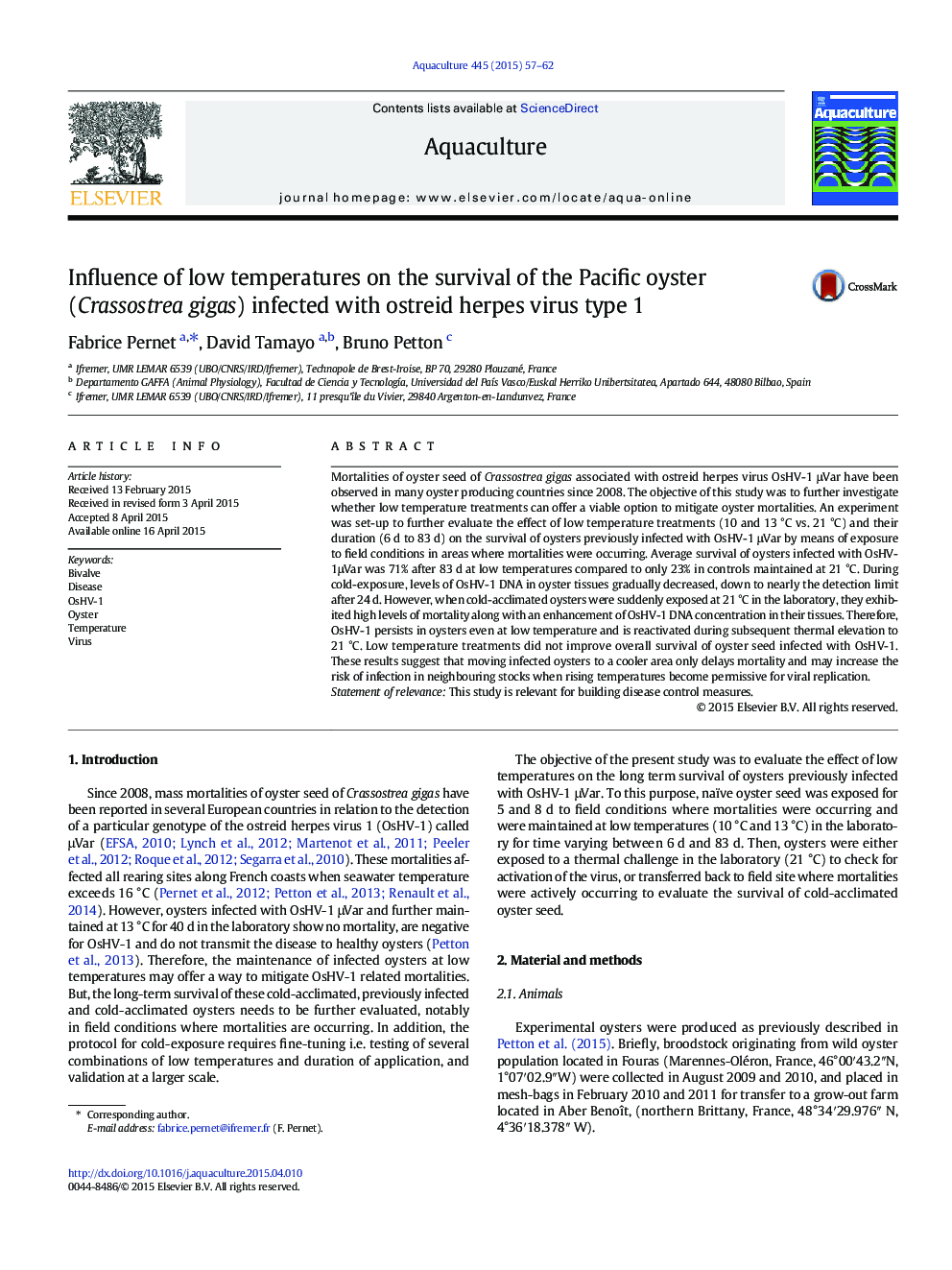| Article ID | Journal | Published Year | Pages | File Type |
|---|---|---|---|---|
| 2421560 | Aquaculture | 2015 | 6 Pages |
•The herpesvirus OsHV-1 is persistent in oysters at low temperature and it is reactivated during thermal elevation to 21 °C.•The reactivation of the virus can occur several weeks after the initial exposure and appears to be temperature dependent.•Overall survival of oyster seed infected with OsHV-1 was not improved by low temperature treatments.
Mortalities of oyster seed of Crassostrea gigas associated with ostreid herpes virus OsHV-1 μVar have been observed in many oyster producing countries since 2008. The objective of this study was to further investigate whether low temperature treatments can offer a viable option to mitigate oyster mortalities. An experiment was set-up to further evaluate the effect of low temperature treatments (10 and 13 °C vs. 21 °C) and their duration (6 d to 83 d) on the survival of oysters previously infected with OsHV-1 μVar by means of exposure to field conditions in areas where mortalities were occurring. Average survival of oysters infected with OsHV-1μVar was 71% after 83 d at low temperatures compared to only 23% in controls maintained at 21 °C. During cold-exposure, levels of OsHV-1 DNA in oyster tissues gradually decreased, down to nearly the detection limit after 24 d. However, when cold-acclimated oysters were suddenly exposed at 21 °C in the laboratory, they exhibited high levels of mortality along with an enhancement of OsHV-1 DNA concentration in their tissues. Therefore, OsHV-1 persists in oysters even at low temperature and is reactivated during subsequent thermal elevation to 21 °C. Low temperature treatments did not improve overall survival of oyster seed infected with OsHV-1. These results suggest that moving infected oysters to a cooler area only delays mortality and may increase the risk of infection in neighbouring stocks when rising temperatures become permissive for viral replication.Statement of relevance: This study is relevant for building disease control measures.
